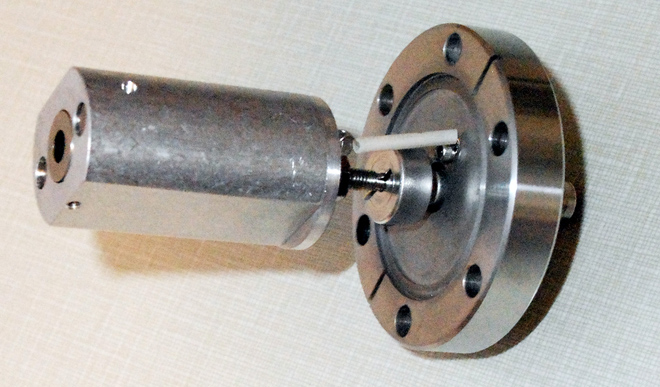Product Overview
Beam Imaging Solutions (BIS) presents the new magnetically shielded FC-1 Faraday cup. This compact and easy to use system attaches to a standard 2.75″ (69.8mm) conflat port. The FC-1 is designed to accurately measure the primary positive ion beam current from an ion source by using a magnetic field to filter out electrons which could otherwise enter the cup. Electron beams can be measured by removing the filter magnets. For ion beams, the Faraday cup collector is slightly positively biased to suppress secondary electron emission and also to reject low energy ions resultant from charge exchange collisions with the primary ion beam and background gas atoms. The beam current is measured with an electrometer connected to a 50 ohm BNC vacuum feedthrough. A shield skirt at the base of the Faraday cup prevents electron or ion current not entering through the cup aperture from being measured by the electrometer and to prevent sputtering of ceramics which isolate the collector from ground. The Faraday cup is also available separately, with UHV compatible coax cable for applications which require remote beam current measurements.
Electron Filtering and Secondary Electron Suppression
Many ion beam systems use electron sources in conjunction with the ion source to neutralize ion charge build up at the target and to minimize spreading of the ion beam due to the space charge of the ions. Electrons are also present in the vacuum chamber from ionization gauges and from secondary electron emission from surface scattering of the the ion beam with components in the vacuum system. In order to filter these electrons from the ion collector inside the Faraday cup, a pair of permanent magnets are used at the cup entrance. These magnets set up a magnetic field across the cup entrance which trap and block electrons from entering the cup. By applying a small positive bias to the collector, secondary electrons created at the collector by collisions with the primary ion beam are drawn back to the collector.
Low Energy Ion Filtering
Low energy ions are created when a primary ion collides with a background gas atom. During this inelastic collision, the ion’s charge and most of it’s kinetic energy is transferred to the gas atom (Charge Exchange) leaving the resultant ion with much less kinetic energy than the original primary ion. By biasing the collector to a positive potential much less than the potential required to repel the incoming primary ion beam, the low energy charge exchanged ions can be rejected at the collector and repelled to the grounded wall of the Faraday cup chamber. The low energy ion contribution to the total primary ion beam current is generally very small, but varies with background gas pressure and distance of the Faraday cup to the ion source and could introduce a significant error to the true primary ion beam current.






